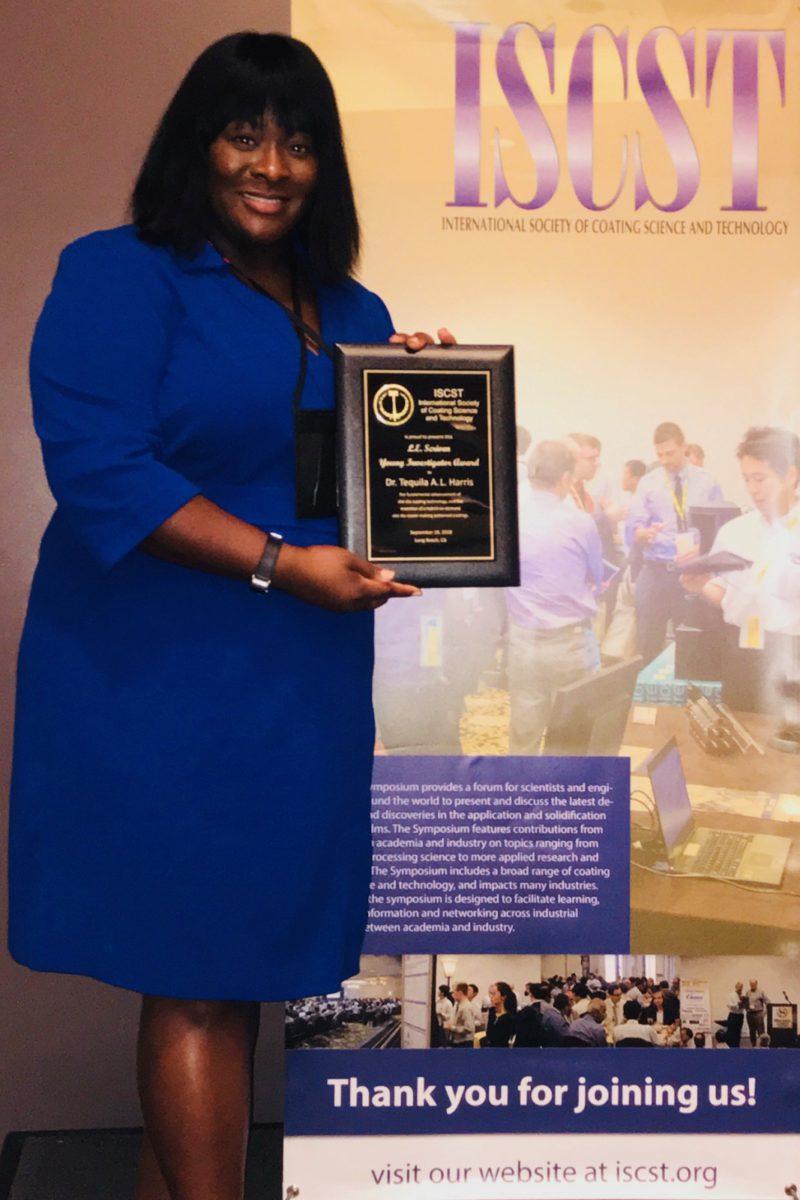
You probably don’t know it, but thin, nearly invisible films cover surfaces that we interact with every day. They’re in the microchips in your phone, solar panels providing your electricity and even in some food products. Tequila Harris, associate professor in the Woodruff School of Mechanical Engineering and one of Georgia Tech’s experts on thin film coatings, recently received the L. E. Scriven Young Investigator Award.
Given by the International Society of Coating Science and Technology, the award recognizes outstanding sustained achievements or one-time breakthroughs in the field of continuous liquid film coating. Harris’ work focuses on a novel advancement in processing film coatings, mainly for use in electronics.
Harris was both the first woman and the first African American individual to win the L. E. Scriven Young Investigator Award in the 20 years it has been awarded. The first-ever recipient of this award was Cyrus Aidun, professor of mechanical engineering and a colleague of Harris’.
“I think in any gender, any ethnicity, when your peers recognize your work as some of the best work that they've seen, that is hands down to me the best feeling ever,” said Harris. “I don’t have words to express my gratitude to the nominator and recommenders.”
Harris was honored with the Young Investigator Award for her hybrid approach; it combines both technology principles from inkjet printers with embedded pins as a hardware solution that work together to control exactly where the liquid material goes. Traditional models of film production included two plates positioned very close together with liquid allowed to stream between them continuously. But if a large uniform sheet wasn’t the goal, researchers would have to go back and scrape off any excess material, etching patterns into the film in a process that was time consuming and wasteful.
Harris’ method takes a digital image, converts it to instructions made of zeroes and ones, and uses these instructions to actuate tiny pins that reach out and interrupt the flow of film liquid flowing between the plates. This allows Harris and her team to create whatever patterns in the film they may want, streamlines the process by eliminating the need to etch patterns into the material and greatly reduces waste.
This hybrid method promises advancements in the thin film coating field in the coming years. Harris thinks that we will see novel developments in pharmaceuticals or tiny electronic devices.
Harris’ work isn’t done – not even close. She has already begun investigating the interactions that occur when more than one coating material is used. The process also needs to be scaled down to work with even thinner films, and the speed of the pin movement is also being improved. She hopes that her work in coming years will apply to many different fields. We might be holding her films in our hands via phones, or putting them in our mouths via food or medication.
